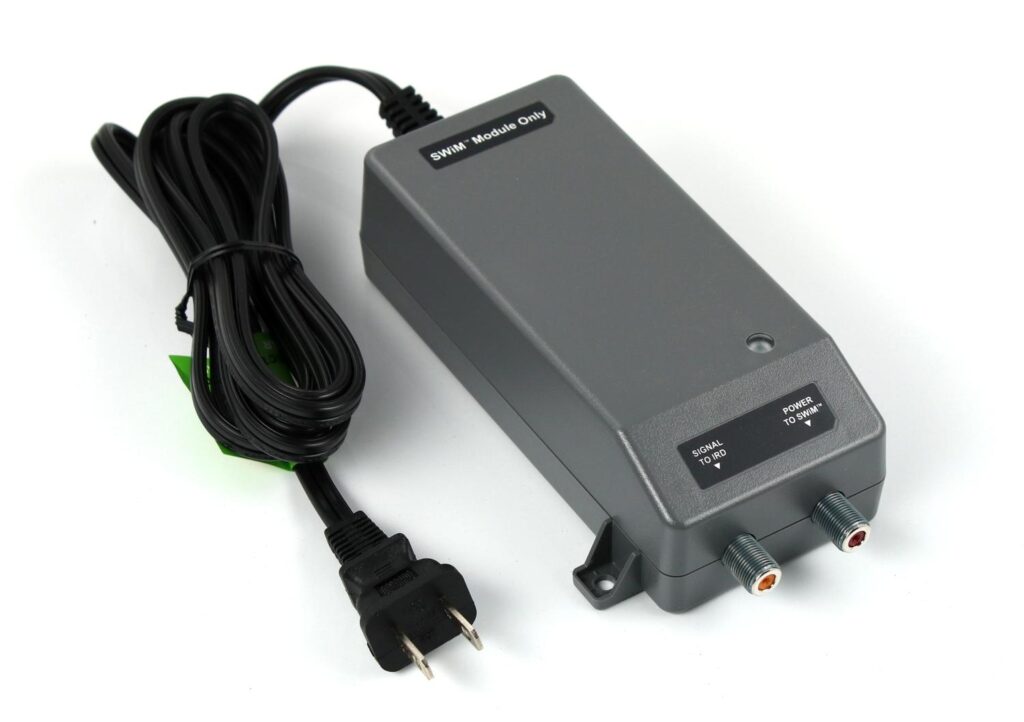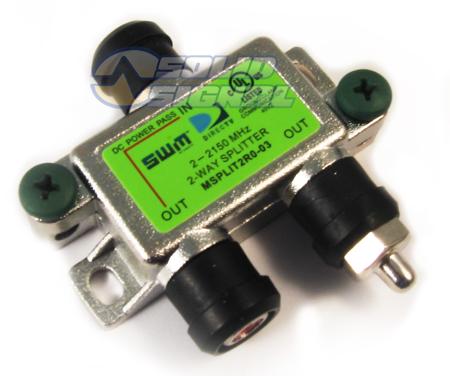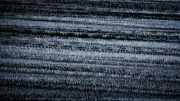The other day, I was talking to Signal Pro Jason Vanover and he showed me a marine installation that made me laugh. It was clean, it was nicely put together and all, but it’s almost like the installer went out of their way to lose as much signal as possible.
Signal loss is a real problem on marine dishes. The typical marine dish has a reflector surface of about 12 inches. Compare that with the 18″ reflector on even the smallest satellite dish on land and you can see the problem. There’s a lot of expensive gadgetry in the satellite antenna to compensate for that, and generally you can expect good reception up to 50 miles off shore.
However, there are some simple things you can do to make that reception even better. It’s important, because there are often long cable runs on boats because you need to use existing conduits. Every dB of signal is really worth trying for. So, let’s dig in.
1. Hook up the power inserter the right way
If you’re using a modern DIRECTV system with your marine satellite antenna, it will need an external multiswitch. That multiswitch needs power, and you’ll need something like one of these:

Most people will connect “SIGNAL TO IRD” to the receiver and “POWER TO SWM” to the multiswitch. As I wrote several years ago, this is a mistake. It works, but you lose 3dB to the internal passthrough on the power inserter. Instead, connect the power inserter directly to the SWM’s PWR port. If you have an older 8-channel SWM, connect the power inserter to the “Legacy 3” port or connect the power inserter to SWM1 and the satellite output to SWM2. Here’s a basic diagram that shows a good marine install.
Dome-DSWM30Note in this case we’re using the SWM-30 multiswitch which has a discrete power port.
2. Use the smallest splitter possible.

It’s tempting to use an 8-way splitter at the output for futureproofing. However, splitters are easy to change out. If you only use one receiver, you can save 14dB by eliminating the splitter completely. With two receivers use both SWM outputs for the same savings. For four receivers use a pair of 2-way splitters and save 11dB. That’s still really decent.
3. Don’t unnecessarily split satellite lines from the antenna.
I’ve seen installs where someone will split the two output lines from the satellite antenna into four so they can connect up all four ports on a SWM. This is totally unnecessary and may actually shorten the life of your multiswitch. Eliminating the splitter and the extra connectors used when you split cables will save you 5dB.
4. Keep cable runs the right length.
Generally speaking, you can’t amplify a satellite signal after it’s left the multiswitch. So, cable lengths are the only way you can keep things going. Make sure the run after the SWM is no more than 150 feet. If you need more than that, relocate the SWM. With a marine antenna, you can have the SWM 100 feet from the antenna because the multiswitch doesn’t power the antenna. The multiswitch has its own amplifier and you can amplify before the multiswitch. This gives you a lot more flexibility.
Also, make sure that cables are at least two feet in length. This will avoid a source of interference within the cable. It may make for a less attractive install, but everything will work better.
5. Inspect connectors yearly and avoid splices.
Here’s another case where you can really affect your reception. A weak or corroded connector can add a lot of noise to the line and that’s going to give you signal drops. Check every connector to make sure it looks good. If you have “splices,” in other words barrel connectors that link up two runs, you can save about 2dB by running straight through instead.
It really does add up.
If you do all the things in this list, you could potentially be saving 24dB. That’s the difference between an acceptable signal and an unacceptable one. It’s worth taking the time to clean up your install before you set sail again.
If you need more advice like this, call the experts! Signal Connect does more marine satellite activations than anyone else. We’re here for you during East Coast business hours at 888-233-7563. If it’s after hours, fill out the form below! We’ll get right back to you!





